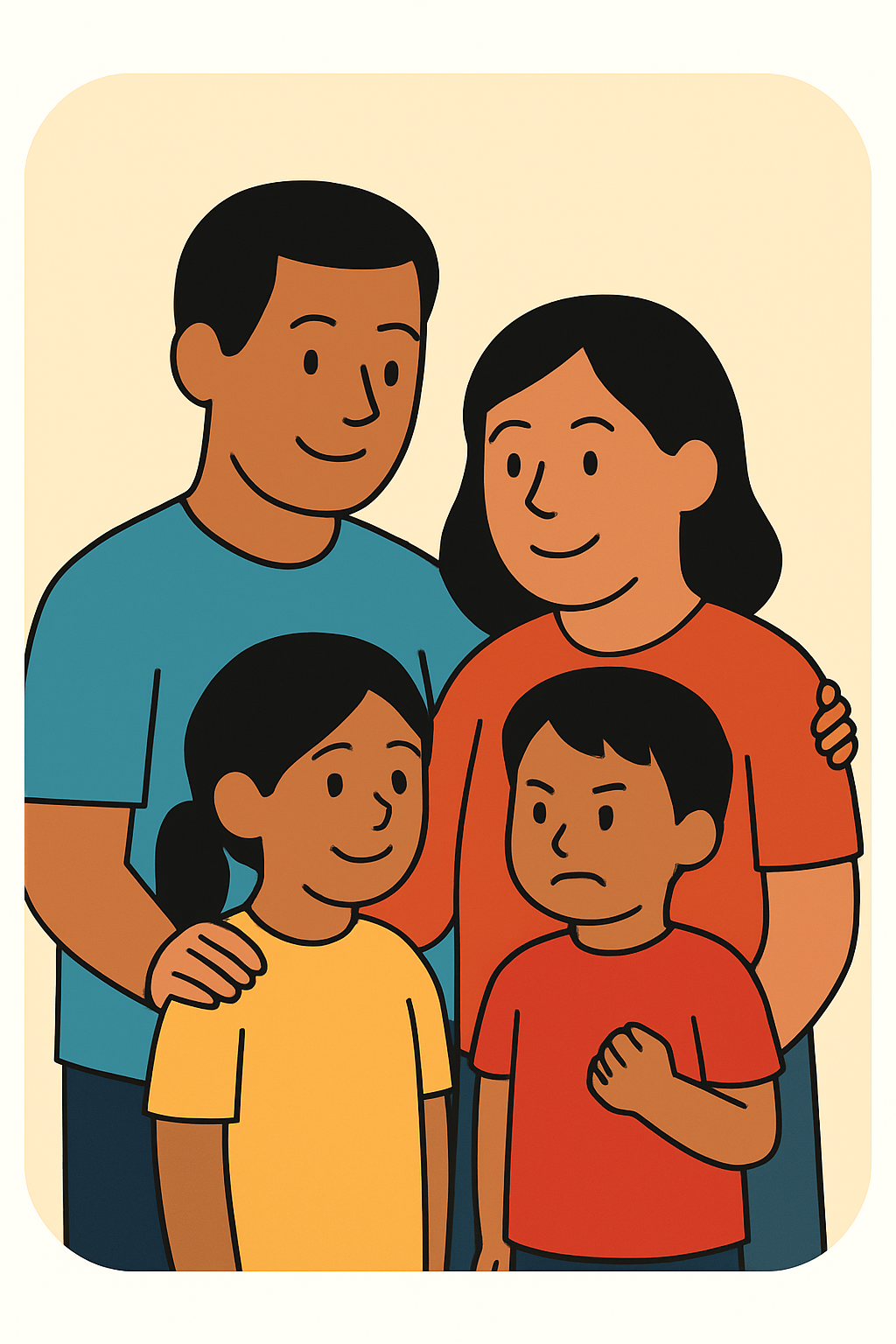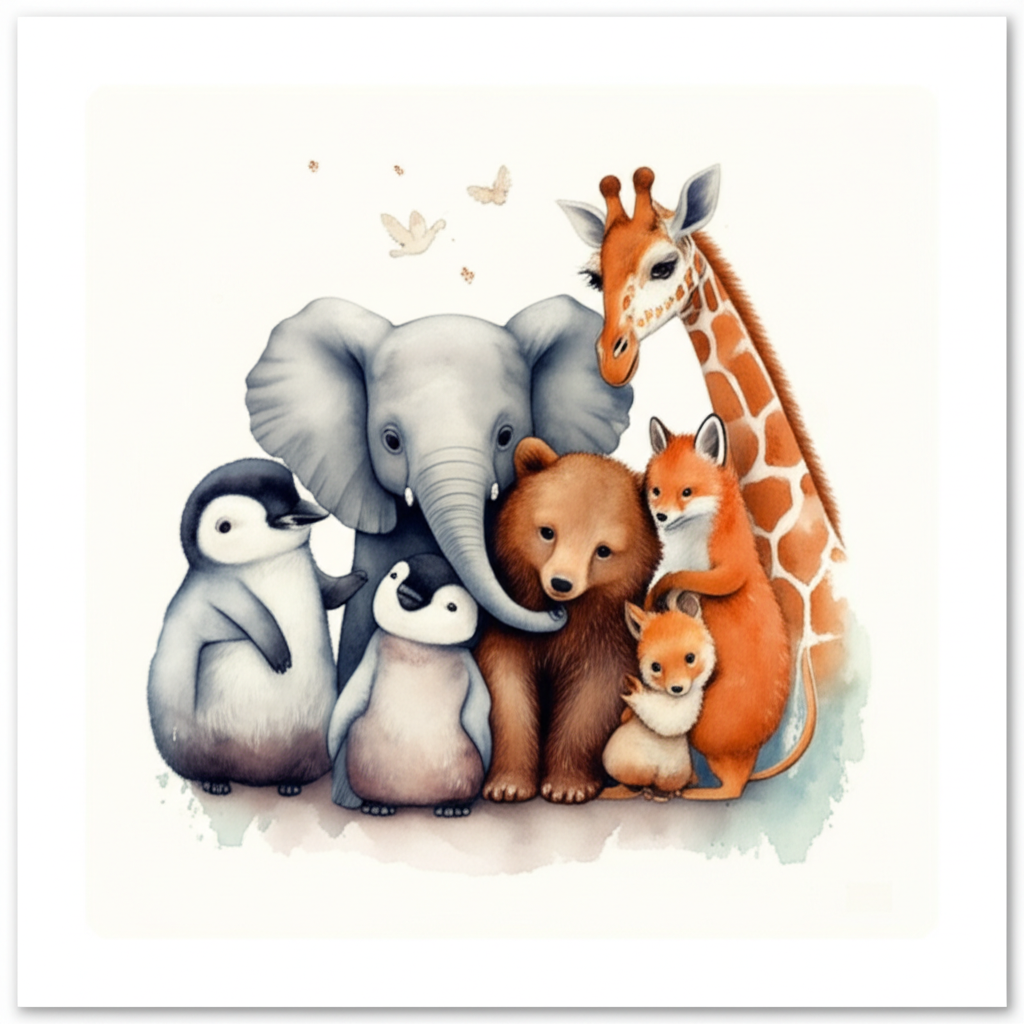Sibling Rivalry: Guidance for Families
Transform sibling conflicts into opportunities for growth, empathy, and stronger family bonds

Sibling rivalry is a normal but often challenging part of family life. Whether you have two children or a bustling household with five or more, the dynamics between siblings can shape their emotional development, social skills, and sense of belonging. This section offers structured parenting guidance and evidence-based mental health tools to help navigate sibling rivalry and strengthen family harmony.
Understanding the Root Causes
Sibling rivalry stems from natural developmental processes and family dynamics. Understanding these root causes helps us respond with empathy rather than frustration.
Children's capacity for sharing, empathy, and conflict resolution develops gradually over time.
- • Toddlers: Parallel play, limited sharing
- • Preschoolers: Learning cooperation
- • School-age: Strong sense of fairness
- • Teens: Identity and independence focus
When parental attention feels limited, children may compete rather than cooperate.
- • More children = more competition
- • Stress reduces available attention
- • Special needs increase demands
- • Quality matters more than quantity
Children naturally seek to differentiate themselves and find their unique place in the family.
- • "The smart one" vs "the athletic one"
- • Birth order influences roles
- • Fixed labels limit growth
- • Each child needs to feel special
Daily Family Management Calculator
See how parenting time increases as your family grows
Basic Daily Care
Individual Connection Time
Why Individual Attention Matters
Individual connection time is different from basic care because it focuses on each child's unique emotional needs, interests, and challenges. This prevents sibling rivalry by ensuring each child feels seen and valued as an individual.
- • One-on-one time: Undivided attention without siblings present
- • Homework support: Individual learning help based on each child's needs
- • Emotional check-ins: Private conversations about feelings and problems
Low risk - manageable attention distribution
Key Factors Influencing Sibling Dynamics
Parental Attention
The amount and quality of attention each child receives from parents significantly impacts sibling relationships. Perceived favoritism or unequal attention can fuel rivalry.
Individual Temperaments
Each child's unique personality and emotional style contribute to the overall family dynamic. Differences in temperament can lead to misunderstandings and conflicts.
Family Communication Patterns
Open and honest communication within the family can help resolve conflicts and promote understanding between siblings.
External Stressors
External factors such as school pressures, social challenges, or family transitions can impact sibling relationships and increase rivalry.
Sibling Rivalry by Developmental Stage
Understanding how sibling relationships evolve with age helps set realistic expectations and choose appropriate strategies.
Characteristics
- •Parallel play - side by side but not together
- •Limited understanding of sharing
- •Jealousy when new baby arrives
- •Need constant supervision during interactions
- •Emotional regulation still developing
- •Cannot understand sibling's perspective yet
Common Issues
- •Regression when new sibling arrives (potty training, sleep)
- •Hitting or pushing without understanding consequences
- •Wanting everything the other child has
- •Difficulty with transitions and changes
- •Meltdowns when attention shifts to sibling
Effective Strategies
- ✓Maintain older child's routines as much as possible
- ✓Teach gentle touch through modeling
- ✓Provide individual attention during calm moments
- ✓Use distraction and redirection rather than reasoning
- ✓Create special 'big kid' privileges and responsibilities
- ✓Acknowledge feelings: 'You wish you could have all of mommy's attention'
Identity Development
- →Beginning to understand 'self' vs 'other'
- →May regress to baby behaviors to compete for attention
- →Starting to notice differences in treatment
- →Developing attachment patterns that affect sibling relationships
Characteristics
- •Beginning to understand turn-taking
- •Developing empathy but still very self-centered
- •Can engage in cooperative play for short periods
- •Strong sense of 'mine' vs 'yours'
- •Learning emotional vocabulary
- •Can follow simple rules but need reminders
Common Issues
- •Difficulty sharing toys and space
- •Tattling on siblings frequently
- •Competition for parent attention and approval
- •Physical aggression when frustrated
- •Wanting to be 'first' or 'best' at everything
- •Jealousy over different bedtimes or privileges
Effective Strategies
- ✓Teach problem-solving: 'What could you try instead?'
- ✓Set clear, consistent rules about sharing
- ✓Praise cooperation and teamwork specifically
- ✓Use timers for turn-taking with special toys
- ✓Create opportunities for each child to be 'special helper'
- ✓Validate emotions while setting boundaries on behavior
Identity Development
- →Comparing abilities: 'I can do it better than...'
- →Seeking unique role in family
- →May adopt opposite traits from siblings
- →Beginning to understand family roles and expectations
Characteristics
- •Strong sense of fairness and rules
- •Can understand others' perspectives
- •Capable of longer cooperative activities
- •Beginning to form individual identities
- •Increased awareness of family dynamics
- •Can engage in complex problem-solving
Common Issues
- •'It's not fair!' becomes a constant complaint
- •Comparison of abilities and achievements
- •Competition in sports, academics, and social situations
- •Forming alliances against other siblings
- •Keeping score of perceived injustices
- •Difficulty accepting different rules for different ages
Effective Strategies
- ✓Explain fair vs. equal treatment clearly
- ✓Avoid comparisons between children
- ✓Encourage individual strengths and interests
- ✓Teach conflict resolution and negotiation skills
- ✓Hold family meetings to address ongoing issues
- ✓Create opportunities for siblings to support each other
Identity Development
- →Actively differentiating from siblings
- →May reject activities siblings excel at
- →Seeking recognition for unique talents
- →Understanding birth order dynamics
- →Developing sense of justice and fairness
Characteristics
- •Developing strong individual identity
- •Increased need for privacy and space
- •Can be very supportive or very competitive
- •Understanding of complex family dynamics
- •Capable of abstract thinking about relationships
- •Peer relationships become increasingly important
Common Issues
- •Borrowing without asking
- •Different rules for different ages causing resentment
- •Competition for privileges and freedoms
- •Protecting younger siblings vs. asserting independence
- •Academic and social pressure affecting family dynamics
- •Romantic relationships creating new tensions
Effective Strategies
- ✓Respect individual boundaries and privacy needs
- ✓Involve teens in family problem-solving
- ✓Allow age-appropriate privileges while explaining rationale
- ✓Encourage mentoring of younger siblings
- ✓Address individual needs rather than treating all the same
- ✓Support their growing independence while maintaining connection
Identity Development
- →Establishing independence from family system
- →May distance from or become protective of siblings
- →Questioning family values and rules
- →Developing own moral compass
- →Preparing for eventual separation from family
Birth Order: Myths vs. Reality
While birth order can influence personality development, context matters far more than position.
Identity Development in Sibling Systems
Children naturally seek to differentiate themselves within the family system, sometimes leading to rivalry.
Parenting Help: Key Strategies
Evidence-based approaches to managing sibling rivalry and building family harmony
Help children understand how fairness doesn't mean identical treatment.
Encourage kids to identify and appreciate positive traits in each sibling.
Rotate sibling pairs for chores and activities to break competitive patterns.
Key Concepts:
- • Equal = Same treatment for everyone
- • Fair = Meeting individual needs
- • Different ages need different things
- • Individual circumstances matter
Examples to Share:
- • Different bedtimes for different ages
- • More help for child with learning differences
- • Different consequences for different behaviors
- • Individual interests and activities
Teaching Script:
"Fair doesn't mean everyone gets the exact same thing. Fair means everyone gets what they need to be healthy, safe, and happy."
How to Use:
- • Each child fills out sheet about siblings
- • Focus on character traits, not achievements
- • Share responses during family meeting
- • Post completed sheets where visible
Sample Prompts:
- • "My sibling is good at..."
- • "I admire how my sibling..."
- • "My sibling makes me laugh when..."
- • "I'm grateful my sibling..."
Benefits:
- • Shifts focus from competition to appreciation
- • Builds empathy and understanding
- • Creates positive family memories
Household Tasks:
- • Cooking dinner together
- • Cleaning shared spaces
- • Yard work projects
- • Organizing family events
Fun Activities:
- • Building projects
- • Art collaborations
- • Planning surprises for parents
- • Creating family videos
Rotation Tips:
- • Change pairs weekly
- • Include all siblings in rotation
- • Celebrate successful teamwork
Fairness vs. Equality
Remember:
These scripts are starting points. Adapt them to your family's communication style and your child's developmental level. The goal is to validate feelings while teaching problem-solving skills.
Mental Health Tools & Resources
Help kids identify and talk through their feelings when conflicts arise.
A daily or weekly challenge to do something kind for each sibling.
Teach emotional regulation by having kids rate their feelings 1-10.
Take three deep breaths
Preventative Practices
Stories by Dr. Z
The Great Toy Rescue
A playful and heartfelt story about five siblings who fight over one special toy and discover the power of teamwork, creative problem-solving, and sibling empathy. Follow along as they learn that working together creates more joy than competing against each other.

Ready to Transform Your Family Dynamics?
Take our comprehensive assessments to understand your family's unique dynamics and get personalized strategies for building stronger sibling relationships.
